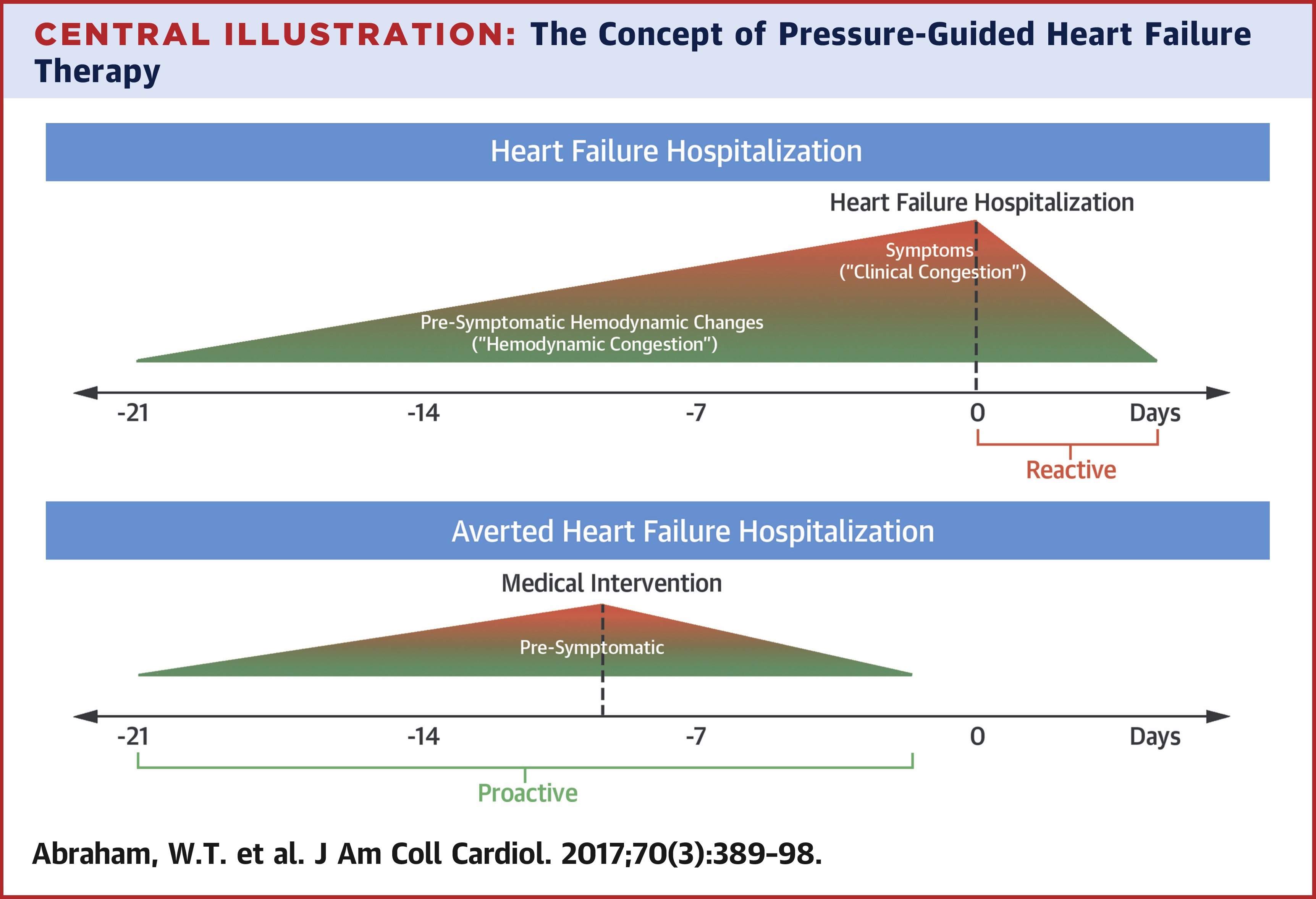
Other Relevant Articles
Review Article2017 Jul 18;70(3):389-398.
JOURNAL:J Am Coll Cardiol. Article Link
Abraham WT, Perl L. Keywords: disease management; hospitalization; patient readmission; pulmonary artery pressure; telemedicine
Rates of heart failure hospitalization remain unacceptably high. Such hospitalizations are associated with substantial patient, caregiver, and economic costs. Randomized controlled trials of noninvasive telemedical systems have failed to demonstrate reduced rates of hospitalization. The failure of these technologies may be due to the limitations of the signals measured. Intracardiac and pulmonary artery pressure-guided management has become a focus of hospitalization reduction in heart failure. Early studies using implantable hemodynamic monitors demonstrated the potential of pressure-based heart failure management, whereas subsequent studies confirmed the clinical utility of this approach. One large pivotal trial proved the safety and efficacy of pulmonary artery pressure-guided heart failure management, showing a marked reduction in heart failure hospitalizations in patients randomized to active pressure-guided management. "Next-generation" implantable hemodynamic monitors are in development, and novel approaches for the use of this data promise to expand the use of pressure-guided heart failure management.
